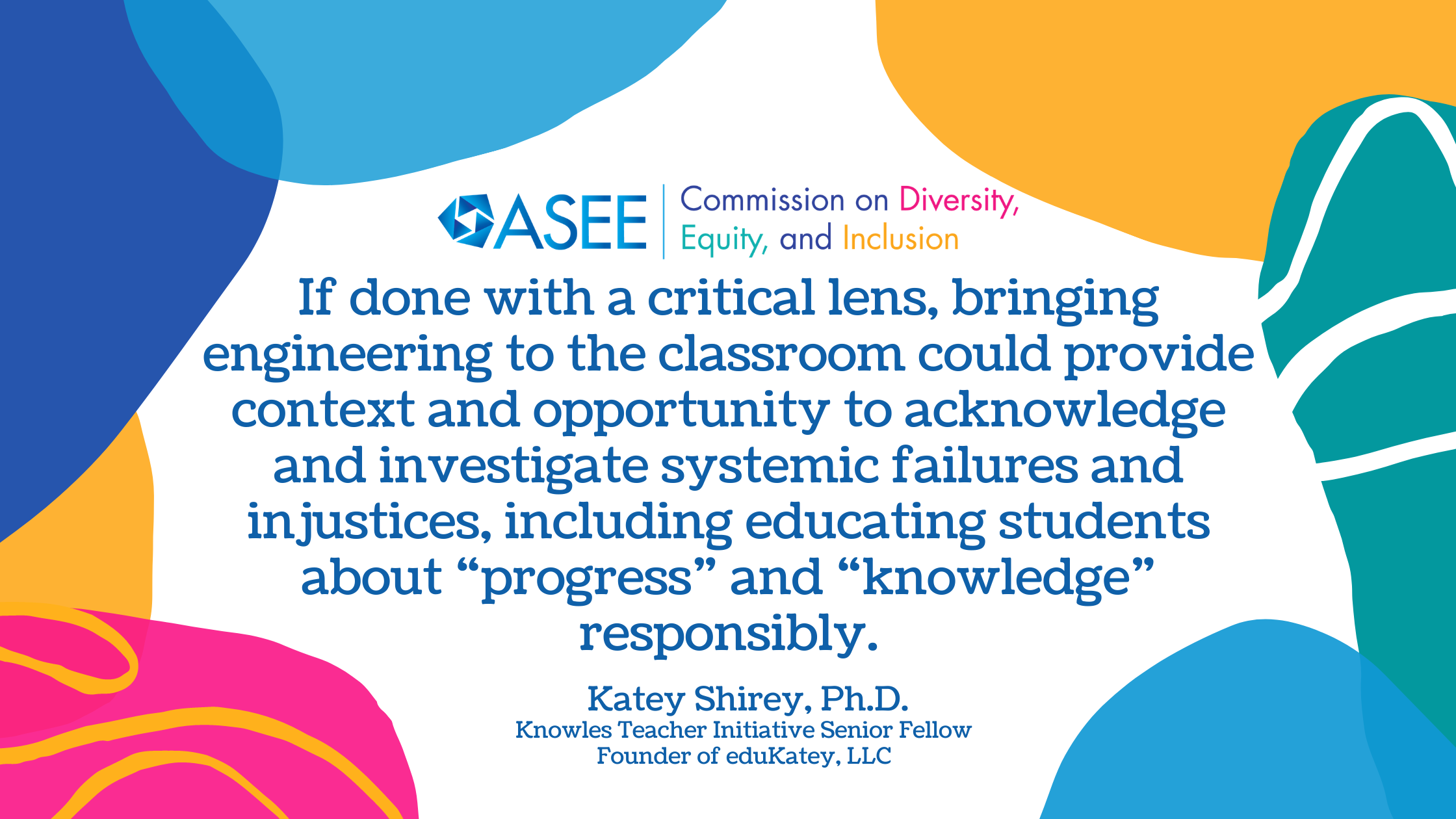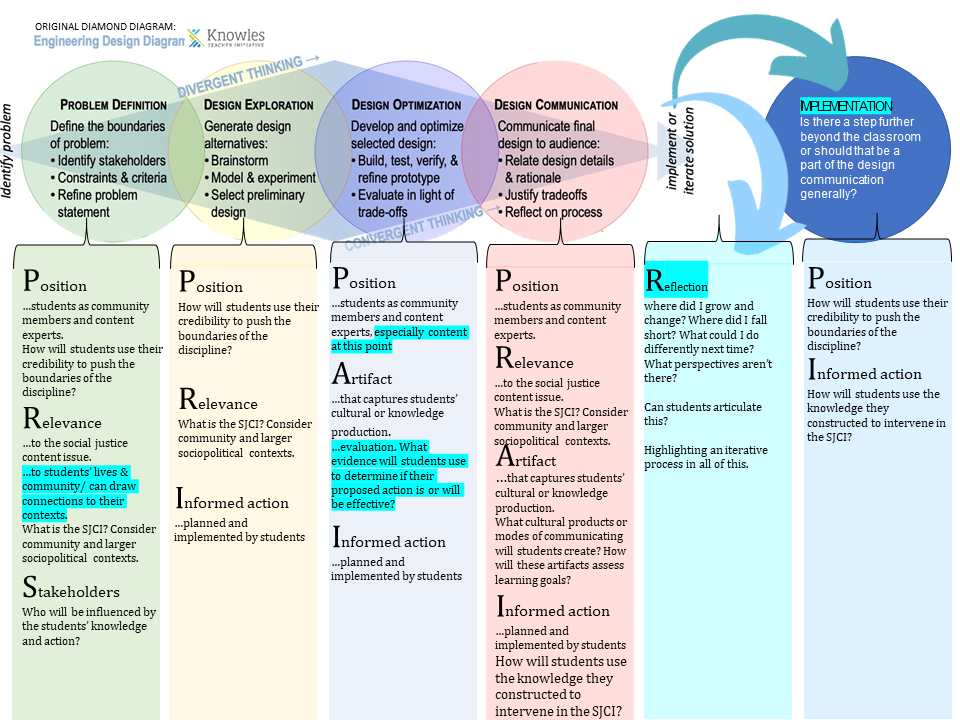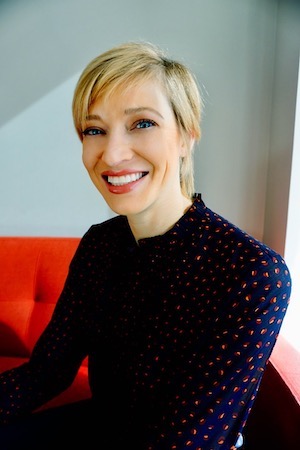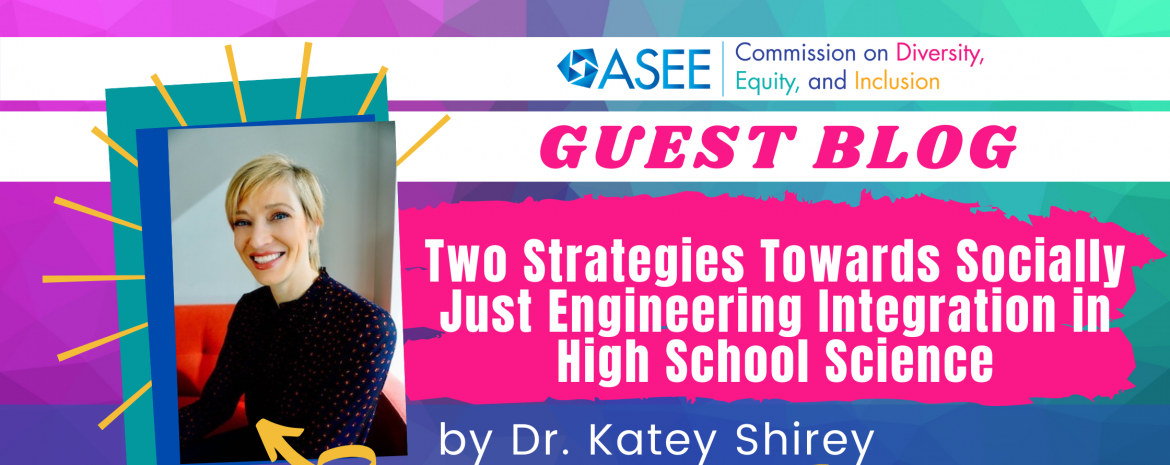Two Strategies Towards Socially Just Engineering Integration in High School Science
By Katey Shirey, Ph.D.
Katey Shirey is Knowles Teacher Initiative Senior Fellow and founder of eduKatey, LLC. She shares her thoughts on creating socially just engineering integration in P-12 education .
Engineering was introduced into high school science with the widespread adoption of the Next Generation Science Standards (NGSS). The NGSS states, “Engineers improve existing technologies or develop new ones to increase their benefits, decrease known risks, and meet societal demands (3-5-ETS1-2).” Problematizing “societal demands” by asking “Whose demands?”, allows this mandate to transform into an opportunity for social justice learning around issues of equity in engineering: which problems are addressed by engineering, who decides which problems deserve attention, and who is recognized for carrying expertise in problem solving. Engineering is rooted in a history of military and violence counterbalanced by capitalism [1]. The history of progress, like that of all white domination history, privileged white profit over humanity elevating white supremacy every step of the way.

The NGSS suggests that teaching engineering in science will extend science to more students, improve learning outcomes, close achievement gaps, and potentially close the wealth gap. What the NGSS didn’t say was that “engineering for everyone” actually clashes with the engineering discipline itself, which is professionally, academically, and historically dominated by white male culture. Without careful articulation, calling “engineering” into the classroom could mean calling more white male dominance into the STEM classroom. However, if done with a critical lens, bringing engineering to the classroom could provide context and opportunity to acknowledge and investigate systemic failures and injustices, including educating students about “progress” and “knowledge” responsibly.
The following recommendations were generated from my work with a small group of high school educators interested in bringing social justice and engineering together. Our understanding of social justice is developing in real time as we work, realizing that our conception of social and environmental justice is wrapped up in white supremacy of STEM and American education. At times we refer to social justice but mean all of the bigger issues around it, and we encourage each other to be specific, acknowledge our ignorances, work to correct our ignorance, and not give up. I heartily recommend Vakil and Ayers’ The racial politics of STEM education in the USA: interrogations and explorations [2] for discussion about the roots of racism in STEM.
In our work as teachers, we’ve continually circled a central question: should we be layering attention to social/environmental justice onto our science-engineering integration or should we be re-imagining our science-engineering integration to be oriented towards issues of social/environmental justice? Instead of choosing sides, we would like to suggest trying both.
Recommendation 1: Include social justice considerations in engineering design challenges.
Adding social justice considerations to existing engineering design challenges seemed like an approachable first step to begin unpacking existing privileges and exclusions in engineering. Decisions made about what problems to invest in, who is included in defining the problems, who contributes to and matters in the design solutions are impacted by history playing out in the present. Frausto and Morales-Doyle’s praXis planning template for authentic classroom assessments [3] was helpful for our group in understanding how engineering is not agnostic to political and social pressures.
![Frausto and Morales-Doyle’s praXis planning template for authentic classroom assessments [3]. Shared with permission.](https://diversity.asee.org/deicommittee/wp-content/uploads/sites/2/2021/05/praXis-planning-template.png)
Frausto and Morales-Doyle’s praXis planning template for authentic classroom assessments [3]. Shared with permission.

Sample “card sort” product for praXis related to an engineering design process.
Recommendation 2: Develop engineering design opportunities around issues of social justice
Our next step in creating a transformed engineering-integrated classroom is to design engineering design challenges to solve structural inequalities while teaching science content. This effort is supported by the standards. The NGSS suggests some critical, even political design challenge ideas. For example, three of the HS engineering performance expectations involve designing a way to reduce human impact on the environment (two on biodiversity and one on natural systems). Two more suggest designing and modeling solutions for “complex real-world problems” and one suggests examining energy resources through a cost-benefit analysis. A teacher could reasonably meet these expectations with either a social or environmental activist lens.
Gather inspiration for projects from local activist groups or non-profits, student interests, and local news. Invite local and national experts into your challenge as Cultivate resources from a range of sources and track the spin of the data. Lean on the praXis planning tool as a teacher and encourage students to use it as well. Investigate indigenous solutions and suppressed technologies. Please see Morales-Doyle, Childress Price, and Chapell [5] for an example.
Choosing to investigate and interrogate social or environmental issues is not an easy choice. There is a gulf between celebrating cultural awareness and saying, “Black Lives Matter at School,” which has led to teacher harassment and removal. The prevalence of science classes in the USA compared to engineering classes means that science educators have a greater chance of teaching engineering to high-school students than stand-alone engineering courses. Bringing social justice to the practice by considering diversity, equity, and inclusion in the design process or designing a solution to a social or environmental justice issue can teach students the power of critical analysis and change through engineering.
References
[1] Secules, S. (2017). Putting diversity in perspective: A critical cultural historical context for representation in engineering. American Society for Engineering Education Annual Conference.
[2] Vakil, S., & Ayers, R. (2019). The racial politics of STEM education in the USA: interrogations and explorations. Race Ethnicity and Education, 22 (4), 449–458. https://doi.org/10.1080/13613324.2019.1592831 The racial politics of STEM education in the USA: Interrogations and explorations
[3] Frausto, A. & Morales-Doyle, D. (2018). praXis planning template. http://bit.ly/praxis_planning_template
[4] Morales-Doyle, D. & Frausto, A. (2021). Youth participatory science: A Grassroots curriculum framework. Educational Action Research, 29(1), 60-78. https://doi.org/10.1080/09650792.2019.1706598
[5] Morales‐Doyle, D., Childress Price, T., & Chappell, M. J. (2019). Chemicals are contaminants too: Teaching appreciation and critique of science in the era of Next Generation Science Standards (NGSS). Science Education, 103(6), 1347–1366.

Katherine Shirey, Ph.D.
Founder of eduKatey
About the Author
Dr. Katey Shirey, Founder, eduKatey, LLC, katey@edukatey.com
I am an integrated STEAM education expert focused on bringing engineering and art into K-12 science and math programs to increase student problem-solving self efficacy. I hold bachelor’s degrees in physics and sculpture from the University of Virginia, a Master’s of Teaching from the University of Virginia, and a Ph.D. in Teaching and Learning, Policy and Leadership at the University of Maryland. As a Knowles Teacher Initiative Senior Fellow and founder of eduKatey, LLC, I collaborate with educators to create and support integrated-STEAM curriculum, professional development, and strategic program plans. I serve as the 2021 ASEE Pre-College Engineering Education Program Chair, I am on the Awards Committee for the ASEE Commission on Diversity, Equity, and Inclusion, and I am a representative on the ASEE Commission for P-12 Engineering Education.
Connect with our guest blogger:
Do you want to become a guest blogger?
CDEI Guest Blog highlight future events, describe best practices, or share calls to action by CDEI members. We invite you to propose posts that share brief research highlights, reports of impactful initiatives, critical thought pieces, and resources you find useful. We especially encourage emerging scholars to share their work. If you are interested in sharing a blog or resource post, you may submit your proposal here. All posts are screened and edited.

